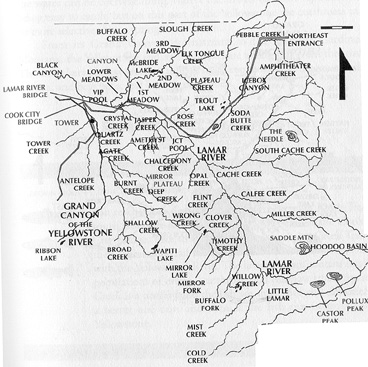|
The Course of Life |
|
Why are rivers such an integral part of mythology and, in turn, to human civilization? · A symbol--as defined by Morris (218) is a "sign that has a complex series of associations..." or more simply a relationship based on metaphor and simile. Rivers are ever moving constants in an otherwise stationary world. Though not breathing, the river lives and that is why these bodies of water make such powerful symbols in mythology. · Rivers play an important role in many cultures as personifications of beings who are worshipped, revered, feared, or treated as metaphors for life. For example, the Celtic river Ribble--as mentioned before--is worshipped by having a human sacrifice every seven years. The river Xanthus is treated as a metaphor for life as an example of rage in the Trojan war as portrayed by Homer. The angered river fights against Achilles and the pollution of dead bodies by rising up and trying to devour him beneath his waters (21.281-283). · Rivers are prominent figures in movies, in songs, and mythologies. The first movie that comes to mind is Pocohontas. This movie--made by Disney--centers around the main character, a Powatan princess, who follows her life by the wind and the river. There is even a song regarding which path of the river to follow and how the river resembles life. · Rivers are often associated with time. Rivers are the epitome of human life as we know it. Symbolically, rivers correspond to the "irreversible passage of time and, in consequence, for a sense of loss and oblivion" (Fraim). As discussed previously in the etiological and observations pages, we as humans are observers and have taken characteristics that rivers possess and have applied them to our lives in order to survive and adapt. One man--John C. Van Dyke--as cited in Fraim's website supports this idea by describing the life of the Colorado River. Dyke observes the natural path of the river noting where it is calm and pure; comparing those more tranquil moments to youth. He also describes how the river reaches adulthood in a turbulent fashion, having more obstacles to break through and climb over. Finally, Dyke observes how the Colorado meets old age and eventually "obliteration" through the Grand Canyon and over the desert to the ocean (Fraim). · As mentioned earlier, the river Xanthus and Achilles battle against each other (21.265-306). In this case, mythologically, the river can be interpreted as a symbol for Achille's inner rage; a symbol for the Trojan army; or a symbol for any other overwhelmingly powerful factor that can affect soldiers in war--such as grief for a fallen comrade. · Another interesting note is that river that served as boundaries sometimes were said to prophesize. For example, the River Dee that ran between the Welsh and English lands prophesized the "results of the perpetual wars" (Squire 413) that would occur between the two sides. · Jumping back to the Dnieper story, the children chose to change into rivers because they believed life would be easier that way. "They were very unlucky when it came to farming, and despite working hard they often went to bed hungry" (Dalal 14). As discussed earlier, rivers are fertile nurturers and providers. These children felt that turning into rivers would be easier because they would be able to fertilize and cultivate their own food with their nurturing waters. Mythologically, turning into rivers may mean that they drowned themselves so that they could return to the sea--the universal womb. · A map of any geographical location shows rivers. These rivers may be thick and greatly branching-such as the Yellowstone river of Yellowstone National park or the Amazon of Brazil. People build civilizations along these tributaries and major waterways because it keeps them connected to every other civilization or society along that waterway. Just as the heart pumps blood around the body through veins and arteries, so the oceans and lakes pump water to their veins and arteries to circulate and supply the aforementioned societies with traders, lumber, fresh water, and other such resources. Rivers are used mythologically as the symbol for our circulatory system. So, going back again to the Achilles and Xanthus story, Xanthus could have very well represented Achilles's adrenaline and physical well being due to his overwhelming rage at the Trojans. "And, from the strond of Dardan, where they fought/To Simois' reedy banks, the red blood ran/Whose waves to imitate the battle sought/With swelling ridges; and their ranks began/To break upon the galled shore, and than/Retire again, till, meeting greater ranks/They join, and shoot their foam at Simois' banks" (Shakespeare). This excerpt from Lucrece is a good example of how the human circulatory system and rivers are synonymous at least symbolically.  (Figure 3.A) If you look on the map above--beyond the words--notice how the tributaries from the Lamar River form a series of vein-like network over the Specimen Ridge in Lamar Valley of Yellowstone National Park. · Encompassing the symbolic relationship between time and rivers stems from the generally unidirectional flow of a river. Rivers can not naturally flow backwards (unless in rare instances) so it is this reason why they so often are portrayed in conjunction with time. · In modern music many artists use rivers as metaphors for life. In Garth Brooks's song The River he compares a river to a dream--or aspiration. "You know a dream is like a river/ever changing as it flows...Trying to learn from what's behind you and never knowing what's in store/makes each day a constant battle/just to stay between the shore" (Wood). This is a good example of how people attribute anthropomorphic characteristics to rivers. This song takes observations of how rivers run and applies it to a situation that people can more readily identify and connect with. ° Credit Given where Credit is Due...°  ° Flow Back ° |